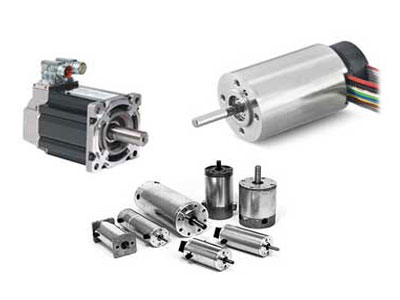Key Takeaway
The speed range of a servo motor varies depending on its design and application, typically from as low as 0.1 RPM to as high as 5,000 RPM or more. This range allows servo motors to perform tasks requiring both slow, precise movements and fast, responsive actions, making them versatile for various applications.
Factors like motor type, load, and control system impact the speed range. For instance, a motor designed for high-speed operations in robotics will have a different range than one used in precision medical devices. Adjusting the speed range within these parameters ensures optimal performance for specific tasks.
Overview of Speed Range in Servo Motors
Servo motors are designed to operate within a specific speed range, which is defined by the motor’s mechanical and electrical properties. The speed range refers to the span from the motor’s minimum to maximum operational speeds, typically measured in revolutions per minute (RPM). Understanding this range is crucial for ensuring that the motor performs efficiently in its intended application. Servo motors can have a wide speed range, depending on their design and the requirements of the task at hand. For example, standard servo motors might operate between 1,000 and 5,000 RPM, while more specialized models can achieve speeds as low as 0.1 RPM or as high as 10,000 RPM. This flexibility in speed range makes servo motors suitable for a variety of applications, from high-speed automation processes to delicate, precision tasks.

How Speed Range Affects Motor Performance
The speed range of a servo motor significantly impacts its overall performance. Operating within the optimal speed range ensures that the motor delivers the required torque and precision, essential for achieving the desired outcomes in various applications. At higher speeds, the motor can perform tasks quickly, which is beneficial in industries where time is a critical factor, such as packaging or assembly lines. However, as speed increases, torque typically decreases, which can limit the motor’s effectiveness in applications requiring substantial force. Conversely, operating at lower speeds usually increases torque, making the motor more suitable for tasks requiring greater control and power, such as in CNC machines or robotic arms. Understanding the relationship between speed and performance is essential for selecting the right servo motor and for optimizing its operation within the desired speed range.
Factors Determining the Speed Range of Servo Motors
Several factors determine the speed range of a servo motor, each influencing how the motor can be used in different applications. The motor’s design is one of the primary factors, including the type of windings, rotor construction, and the quality of materials used. These elements dictate the motor’s maximum and minimum speeds, as well as its ability to maintain performance across that range. The power supply also plays a crucial role; a stable and sufficient voltage supply allows the motor to achieve higher speeds, while lower voltage might limit the motor’s upper speed range. Additionally, the load attached to the motor affects its speed capabilities. Heavier loads require more torque, which can reduce the motor’s maximum achievable speed. Environmental conditions, such as temperature and humidity, can also impact the motor’s speed range by affecting its internal components and overall efficiency.
Speed Range Requirements for Different Applications
Different applications require servo motors with specific speed ranges to function effectively. In high-speed robotics, for example, motors need to operate at the higher end of their speed range, around 5,000 RPM or more, to enable rapid and precise movements. These high-speed capabilities are essential for tasks such as sorting, assembling, or packaging, where speed directly impacts productivity. On the other hand, applications like CNC machining require a balance of speed and torque, with motors typically operating in the mid-range, around 3,000 to 4,500 RPM. This balance ensures that the motor can cut or shape materials accurately without sacrificing power. For applications requiring low-speed operation, such as in medical devices or precision instruments, motors may operate at speeds as low as 0.1 RPM, allowing for extremely controlled and delicate movements. Understanding these speed range requirements is critical for selecting the right motor to match the specific demands of each application.
Adjusting Speed Range for Optimal Servo Motor Functionality
Adjusting the speed range of a servo motor to meet specific application needs involves several methods and techniques. One common approach is to modify the input voltage or current, which directly influences the motor’s speed. By increasing the voltage, the motor can achieve higher speeds, while reducing it allows for slower, more controlled operation. Another technique is the use of pulse width modulation (PWM), which adjusts the motor’s speed by varying the width of the pulses in the electrical signal sent to the motor. This method offers precise control over the speed range, allowing the motor to operate effectively within its optimal range for the task at hand. Additionally, gear systems can be employed to alter the output speed, providing further customization of the motor’s performance. Engineers may also utilize control algorithms, such as PID controllers, to continuously adjust the motor’s speed based on real-time feedback, ensuring that it operates efficiently across its entire speed range.
Conclusion
Maximizing the performance of a servo motor requires a deep understanding of its speed range and how it influences the motor’s operation. By knowing the optimal speed range for a given application, engineers can select the right motor and adjust its settings to ensure it delivers the necessary torque, precision, and efficiency. Whether for high-speed tasks in automation, balanced operations in CNC machining, or delicate movements in medical devices, understanding and utilizing the motor’s speed range is key to achieving the best results. Properly managing the speed range through techniques like voltage adjustment, PWM, and gear systems can lead to enhanced performance, longer motor life, and more reliable outcomes in various industrial applications.
